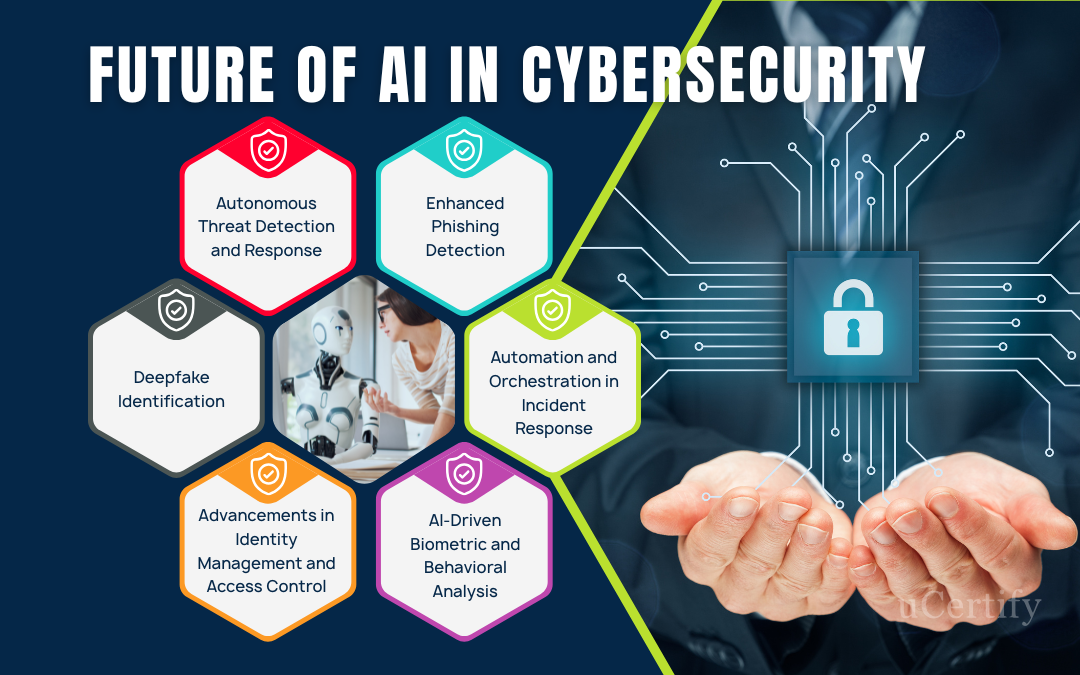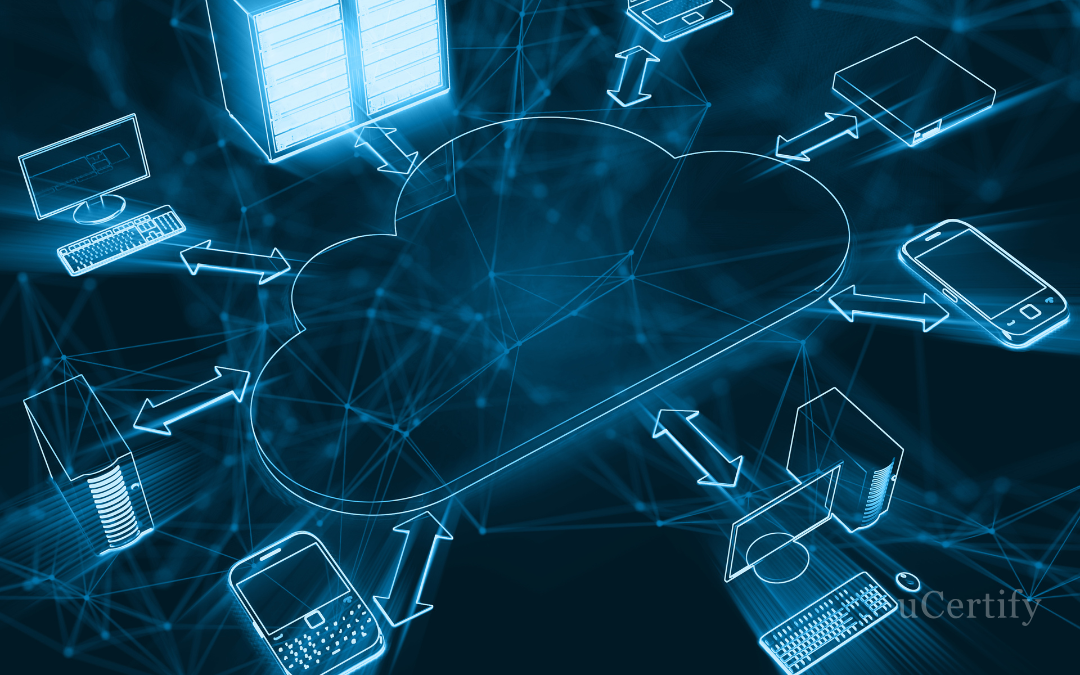AI in Cybersecurity is no longer a futuristic concept—IT’S HERE! And it’s transforming how cybersecurity operates across the board.
From AI-powered threat detection to automated incident response, 50% of the organizations are rapidly adopting AI to stay ahead of increasingly sophisticated cyber threats. But while AI strengthens defenses, it also raises an important question: What does this mean for cybersecurity jobs?
As Generative AI reshapes how threats are created and detected, cybersecurity professionals must evolve alongside it. A mere question previously about how generative AI can be used in cybersecurity has now evolved into not just changing the tools but also redefining roles, skills, and career paths.
In this blog, we’ll explore how AI is influencing cybersecurity careers, the skills professionals need to stay relevant, emerging threats, and what the future holds.
What is the Impact of AI on Cybersecurity Jobs?
The rise of Generative AI is transforming many industries, including cybersecurity. While AI enhances threat detection and response, it’s also changing the skills and roles professionals need to stay ahead.
To remain competitive, cybersecurity experts must adapt by mastering AI-driven tools and evolving their skill sets.
But is it good or bad? That’s what we will be discussing in this section.
AI-Powered Threat Detection and Prevention
You can use AI algorithms to examine large datasets and find abnormalities that can cost you millions!
It could be signs of danger. AI detects malware, breaches, and hacking indicators in real time.
These alerts facilitate a prompt incident response, protecting your sensitive data, minimizing downtime, and safeguarding your organization’s reputation…before the threat escalates.
By using AI-powered web security to automate repetitive processes like log analysis and vulnerability scanning, you can focus on more intricate and strategic jobs while enhancing your overall security posture.
The Emergence of AI-Driven Cyber Threats
On the other hand, cybercriminals are using AI to create increasingly complex and flexible attacks. AI makes it possible to produce sophisticated malware and automated phishing efforts that are more realistic and challenging to identify.
Notably, approximately 40% of all phishing attacks through emails are now AI-driven, highlighting the escalating arms race between cyber defenders and attackers.
AI in Security Operations Centers (SOCs)
AI is being incorporated into security operations centers to optimize their capabilities. AI-powered SOCs can process and analyze data more quickly, speeding up threat detection and response.
This automation streamlines operations, allowing cybersecurity teams to focus on high-level threat analysis and strategic decision-making.
Role of AI in Compliance and Risk Management
AI also plays a pivotal role in compliance and risk management. By automating policy checks and spotting risky employee behavior, it pinpoints exactly where training is needed. This intel will help you develop more targeted programs.
Furthermore, AI enables real-time compliance monitoring, alerting teams to nonconformities and failing controls, thereby facilitating proactive risk mitigation.
Pros and Cons of AI in Cybersecurity
Let’s have a look at the benefits and challenges of AI in cybersecurity:
| Pros | Cons |
| Enhanced threat detection through pattern recognition and anomaly analysis | High costs for implementation and skilled talent |
| Automated responses that reduce human error | Adversarial AI used by cybercriminals |
| Predictive analytics to identify vulnerabilities early | Data quality issues can affect the accuracy |
| Better accuracy with fewer false positives | Algorithm bias from flawed training data |
| 24/7 monitoring and scalable protection | Privacy concerns with user activity tracking |
As AI continues to evolve, you must adapt by acquiring new skills and knowledge to effectively leverage AI tools and counter AI-driven threats. Continuous learning and upskilling are essential to remain effective in this dynamic field.
Gain hands-on expertise with uCertify’s Artificial Intelligence for Cybersecurity course. Pair it with top certifications like CISSP and CompTIA Security+ to build a powerful, future-ready skill set.
Psst…. You will also get an attractive exam voucher discount with our certification training programs.
Preparing for AI-Integrated Cybersecurity Job Roles
The integration of Artificial Intelligence (AI) into cybersecurity is reshaping the industry, creating both challenges and opportunities for professionals.
As AI becomes a staple in security operations, it’s imperative for you to acquire relevant skills to remain effective and competitive.

AI and Machine Learning (ML) Proficiency
Understanding AI and ML fundamentals is crucial. These technologies automate the threat detection and response process with a level of precision and speed that humans alone can’t match. Let’s say your team just deployed an AI-powered threat detection system. It flagged a zero-day exploit—great! But no one on your team knows how the model made that decision. Now, management’s asking questions, and compliance is on your neck.
With an understanding AI and ML fundamentals, you’ll be able to interpret, tune, and validate the models protecting your infrastructure. Stay ahead by learning how these systems think. Many educators, such as uCertify, have started implementing AI in cybersecurity courses to help you stay up to date with the trends.
Data Analysis and Interpretation
Your AI systems generate priceless threat data each second. By hunting for IOCs, profiling TTPs, and correlating anomalies across endpoints, you can turn the noise into threat intelligence.
Imagine your logs are screaming with alerts, millions of data points pouring in from endpoints, firewalls, and SIEMs. But no one’s connecting the dots. The breach happened days ago. No one saw it coming.
If you know how to extract real threat intelligence from chaotic data. With skills in IOCs, TTP profiling, and anomaly correlation, you’ll turn static logs into actionable insights and catch breaches before they spread. The result? Faster incident containment, reduced breach costs, and a happy employer.
Ethical Hacking and Penetration Testing
AI isn’t just a tool in cybersecurity, it’s a target. And if you’re not stress-testing your AI models, you’re rolling out systems with invisible backdoors. Picture this: your new AI-powered authentication model works like a charm until someone tricks it using adversarial inputs. Your pentest team missed it. Why? Because they’ve never tested AI-specific systems before.
You need red teams that speak the language of algorithms. Ethical hacking and pen testing skills help you stress-test AI for logic flaws, data poisoning risks, and AI-specific vulnerabilities—before attackers do.
Look, there’s a growing gap—most professionals aren’t trained to exploit or secure AI-driven systems. Red team experience with AI is in high demand but short supply. Want to stand out? Master ethical hacking for AI environments and be the one who breaks it before the bad guys do.
Cloud Security
Today’s AI lives in the cloud. But here’s the problem: a misconfigured bucket, an over-permissioned API, or a forgotten token can expose everything—models, data, and IP. Cloud security isn’t optional anymore, it’s the backbone of AI protection.
If an unsecured S3 bucket just leaked your AI training data—hundreds of hours of IP will be gone in seconds. The culprit? Misconfigured IAM roles and exposed APIs. The worst part? No one even noticed until it hit the news.
Here’s the solution: AI lives in the cloud, and it’s only as secure as your cloud setup. Cloud security skills let you lock down AI workloads, enforce least privilege, and secure every API and model pipeline from end to end.
There’s a massive demand for cybersecurity pros who understand both cloud architecture and AI pipelines. If you’re not upskilling here, you’re missing out on high-paying roles that desperately need to be filled. This is where smart careers get smarter.
Regulatory Compliance and Risk Management
GDPR fines for algorithmic bias audits. Shareholder lawsuits over hallucinated financial advice. Your cybersecurity team knows ISO 27001, but can they map AI model decisions to Article 22’s “right to explanation?” That’s today’s reality for many organizations. AI governance isn’t just a fancy term, regulators are active, and you need to upskill now!
Steps for Cybersecurity Professionals to Upskill and Stay Relevant
To effectively upskill and remain pertinent in the evolving cybersecurity domain, consider the following strategies:
- Engage in Specialized Training Programs: Enroll in courses that focus on AI applications in cybersecurity to build a solid foundation in this interdisciplinary field.
- Pursue Relevant Certifications: Obtain certifications that emphasize AI and cybersecurity integration, demonstrating expertise and commitment to prospective employers. Cybersecurity certifications add great value to your profile in these changing times.
- Participate in Hands-On Projects: Gain practical experience by working uCertify’s hands-on labs that involve AI-driven security tools, enhancing problem-solving skills and technical proficiency.
- Stay Informed on Industry Trends: Regularly read industry publications, attend webinars, and join professional networks to keep abreast of the latest developments in AI and cybersecurity.
- Develop Soft Skills: Enhance communication, critical thinking, and adaptability skills to effectively collaborate with cross-functional teams and navigate the dynamic cybersecurity landscape.
Acquire these skills and engage in continuous learning through cybersecurity courses. Cybersecurity professionals can effectively bridge the career gap and position themselves for success in an AI-integrated environment.
Future of AI in Cybersecurity
AI is rapidly transforming the cybersecurity landscape, introducing innovative solutions to combat increasingly sophisticated cyber threats.
As we look ahead, several emerging trends are poised to redefine how organizations protect their digital assets.

Enhanced Phishing Detection
The integration of Large Language Models (LLMs) into cybersecurity tools is enhancing the detection of phishing attempts. By understanding and processing natural language, these AI-driven systems can proactively identify and block malicious emails, reducing the risk of successful phishing attacks.
Deepfake Identification
The rise of deepfake technology is creating serious challenges for cybersecurity. Over the past years, 61% of the organizations have faced an increase in deepfake attacks.
To fight back, AI tools, especially generative AI and machine learning algorithms, are being used to detect and counter deepfakes.
Next-gen AI systems can catch micro-glitches in pixels, voice cadence, and facial expressions that are invisible to the human eye. Machine learning models flag unnatural speech patterns, movements, lighting inconsistencies or mismatched context in real-time conversations.
Automated tools also cross-reference media files with known deepfake signatures to detect threats before they cause harm.
AI in Identity Management and Access Control
AI is refining identity and access management systems by introducing smarter, context-aware security protocols. Through behavioral analysis, AI ensures access is based not only on credentials but also on typical user behavior, helping reduce identity spoofing and unauthorized access incidents.
Biometric and Behavioral Authentication with AI
AI is taking biometric and behavioral authentication to new heights. It analyzes unique characteristics like facial features, voice tone, and even typing rhythms to verify users more precisely. This enables more secure, personalized, and frictionless access experiences.
Bottom Line
Let’s be real—AI isn’t coming for your job, but it is coming for your comfort zone. As cybersecurity evolves at lightning speed, professionals who cling to old methods risk being left behind. But those who embrace AI, learn how it works, and use it to their advantage? They’ll be the ones writing the new rules of digital defense.
From AI-generated phishing scams to deepfake deception and predictive threat modeling, the game is changing fast. But here’s the good news: so can you.
Final take? Don’t fear the AI—train with it, learn from it, and lead with it. Whether you’re just breaking into the cybersecurity space or you’re a seasoned analyst, now’s the time to upskill, adapt, and armor up.
Start with courses like Artificial Intelligence for Cybersecurity, earn good cybersecurity certifications like CompTIA Security+, CSSP, etc. and stay one step ahead of the bots—and the bad guys.
Cybersecurity’s future isn’t AI vs. humans. It’s AI + humans. Be the expert who knows how to use both.
FAQs
Will AI replace cybersecurity?
AI won’t replace cybersecurity, but it will reshape it. While AI can handle repetitive tasks like threat detection or log analysis, it lacks the human intuition and contextual decision-making needed for complex cyber defense. Professionals will remain essential, just with evolving roles.
How will AI affect cybersecurity?
AI is making cybersecurity faster, more proactive, and data-driven. It helps identify threats in real-time, automate responses, and even predict vulnerabilities. However, attackers are also using AI, so defenders must continuously upskill to stay ahead.
What is the impact of AI on cybersecurity?
AI has a big impact—it boosts efficiency, improves accuracy, and reduces response time. But it also introduces new threats, like adversarial attacks and AI-powered malware. This makes training and adaptation critical for cybersecurity teams.
Will AI replace cybersecurity jobs?
AI will change cybersecurity jobs, not eliminate them. It may reduce manual work, but demand for experts who understand both security and AI tools is growing fast. Upskilling through courses like uCertify’s Artificial Intelligence for Cybersecurity ensures professionals stay in demand.






No Comments Yet
Be the first to share your thoughts on this post!